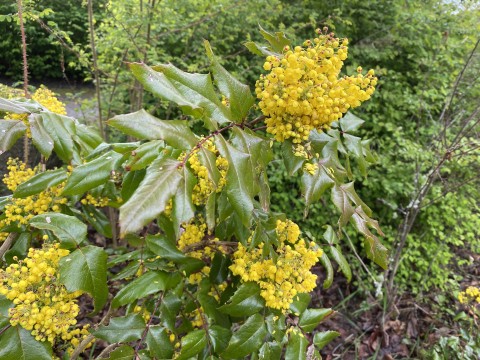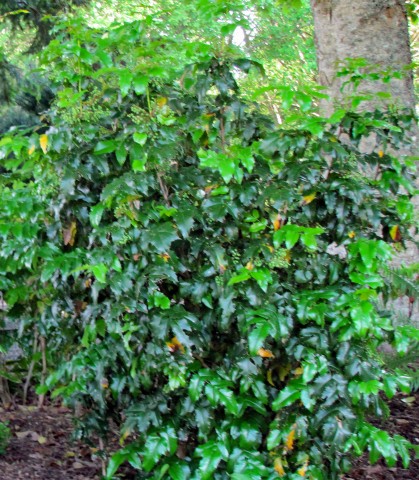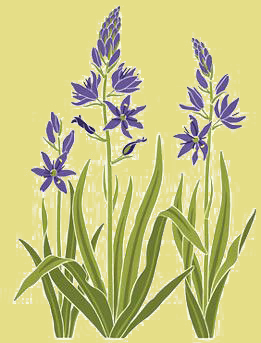Oregon Grape



1 - Image by Claudia Gorbman
2 - Image by www.nwplants.com
Licensed Under: CC-BY-SA-3.0 Unported
3 - Image by Lindsey Vallance
As you enter the Buck Lake Native Plant Garden from the north entrance and walk the main path, you will see the shiny holly-like leaves of tall Oregon grape, Mahonia aquifolium. If you are there in early spring, you will also see the bright yellow, fragrant blossoms produced from March through May. As the summer progresses, Oregon grape sets bunches of green berries, which ripen to deep blue and truly do resemble bunches of small grapes. This shrub is fairly tolerant of a wide variety of growing conditions, but prefers shade to part shade to look its best. Growing from 6'-8' tall and 3'-6' wide, evergreen tall Oregon grape is particularly well suited for a hedgerow barrier or screen. Plan the planting well because, once established, these shrubs rarely survive transplanting. To help it thrive, give Oregon grape summer water for the first several years, after which it is quite drought-tolerant. If it begins to look scraggly or is becoming too large for its site, cut back after flowering, to renew the plant. It can be drastically cut to the base or simply have some branches removed and will produce new growth.
Mahonia aquifolium is an important food source for a variety of wildlife. Hummingbirds, bees and butterflies visit its flowers, various songbirds eat the fruit, and deer and elk browse the fruit and foliage.
The berries are very tart and were not consumed in quantity by Native Americans. Sometimes they were mixed with salal berries or other sweeter fruit to make them more palatable. The bark and roots were used medicinally to treat a number of ailments. The shredded bark was used to make a bright yellow dye for basket materials.

